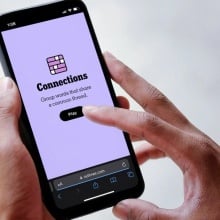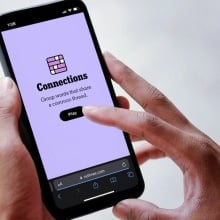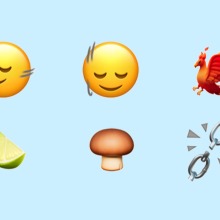"What's your love language?"
It's a question you've likely heard on and offline, with an answer many have seriously contemplated about themselves and their partners. As the theory goes, there are only five options for how people supposedly demonstrate and desire love: is it words of affirmation, physical touch, quality time, receiving gifts, or acts of service?
The theory of love languages, coined by Baptist preacher Gary Chapman in a book written over thirty years ago, is ubiquitous on the internet and IRL. The phrase is often used in conversations about love, TikTok quizzes have been dedicated to the question, and apps like Hinge have concocted romantic theories based on the idea.
But the idea of love languages may be largely unfounded, with little empirical backing, according to a new paper from researchers at the University of Toronto and York University. The study set out to unpack the heart of the love languages theory, based on Chapman's argument that the key to a successful romantic relationship is for partners to understand and speak each other's respective love languages. The five languages theory also assumes that each person has a primary love language, which means that they prioritize one way of expressing love over others.
The researchers found, however, that people tend to value each of the five languages in different contexts. They also emphasized that the languages "may not encompass all the meaningful ways that people express and feel love". Finally, the paper found "very little evidence" that partners with matching love languages fostered better relationships.
Chapman's credibility has been questioned before, largely because his notions are limited and constructed to apply only to heterosexual, cisgender, Caucasian, and Christian couples aligned with conservative, patriarchal gender roles. Emily Impett, one of the researchers from the University of Toronto, highlighted this: "One key thing to remember is that Chapman developed the five love languages by working with a sample of white, religious, mixed-gender, traditional couples. There are certain things that are left out, such as affirming a partner's personal goals outside of the relationship, which might be significant to couples with more egalitarian values."
The preacher has also been called out for instances of homophobia and aligning his theories with embedded misogyny.
And yet, love languages remain wildly popular. Chapman's book on the subject sold over 20 million copies worldwide. In online spaces, the theory has proliferated discourse on modern relationships. On TikTok, the hashtag #lovelanguage had over 3 billion views last year.


There could be a number of reasons why. For one thing, decades-old arguments on the keys to successful relationships have sparked newfound curiosity on the internet. Ideologies from the 2000s self-help guides – like Sherry Argov's 2002 book Why Men Love Bitches and John Gray's 1992 bestseller Men Are from Mars, Women Are from Venus – have racked up millions of views on TikTok. Videos show TikTokkers reading out sections from these dating manuals, sometimes challenging outdated notions of dating but oftentimes reviving the rules that they tout.
For another, TikTok users simply love theories on love, from the invisible string theory to the moon phase trend to the latest orange peel theory. Each of these ideas question compatibility and a relationship's longevity, with catchy phrases to accompany them. But these philosophies can be inherently problematic, confining all relationships to boxed-in notions on what works and what doesn't.
As the latest research points out, people appreciate advice on improving relationships. There are so many ways to love and be loved, and TikTok pseudoscience can't encompass one of life's biggest mysteries.
Topics TikTok



























